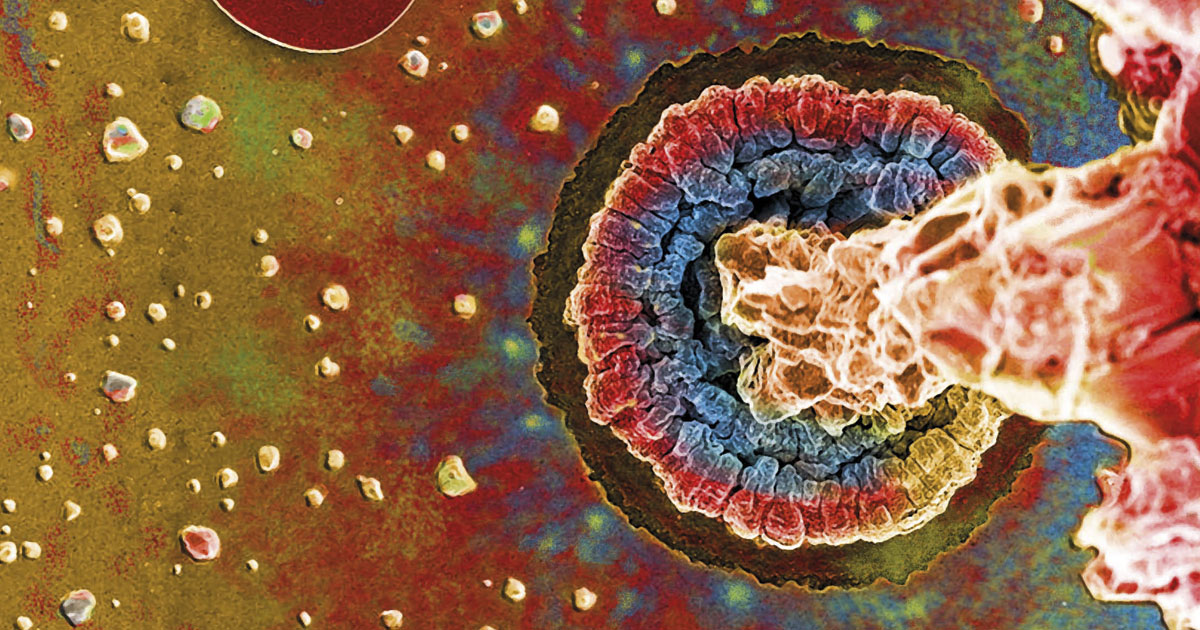Tin oxide nanoparticles (scattered fragments) congregate in a cohesive circle, taking on the appearance of a volcano. The Functional Materials Development Center, directed by chemist Elson Longo, has developed a sensor for gaseous pollutants based on this compound. “Tin oxide is much more sensitive and selective than the available alternatives,” says Longo. The photograph, entitled Água da morte, is part of the Nanoart series which was displayed at the Museum of Tomorrow in Rio de Janeiro.
Image captured under a high-resolution scanning electron microscope by Rorivaldo Camargo, color added by Enio Longo and submitted by Elson Longo, professor at the Araraquara campus of Unesp
Republish